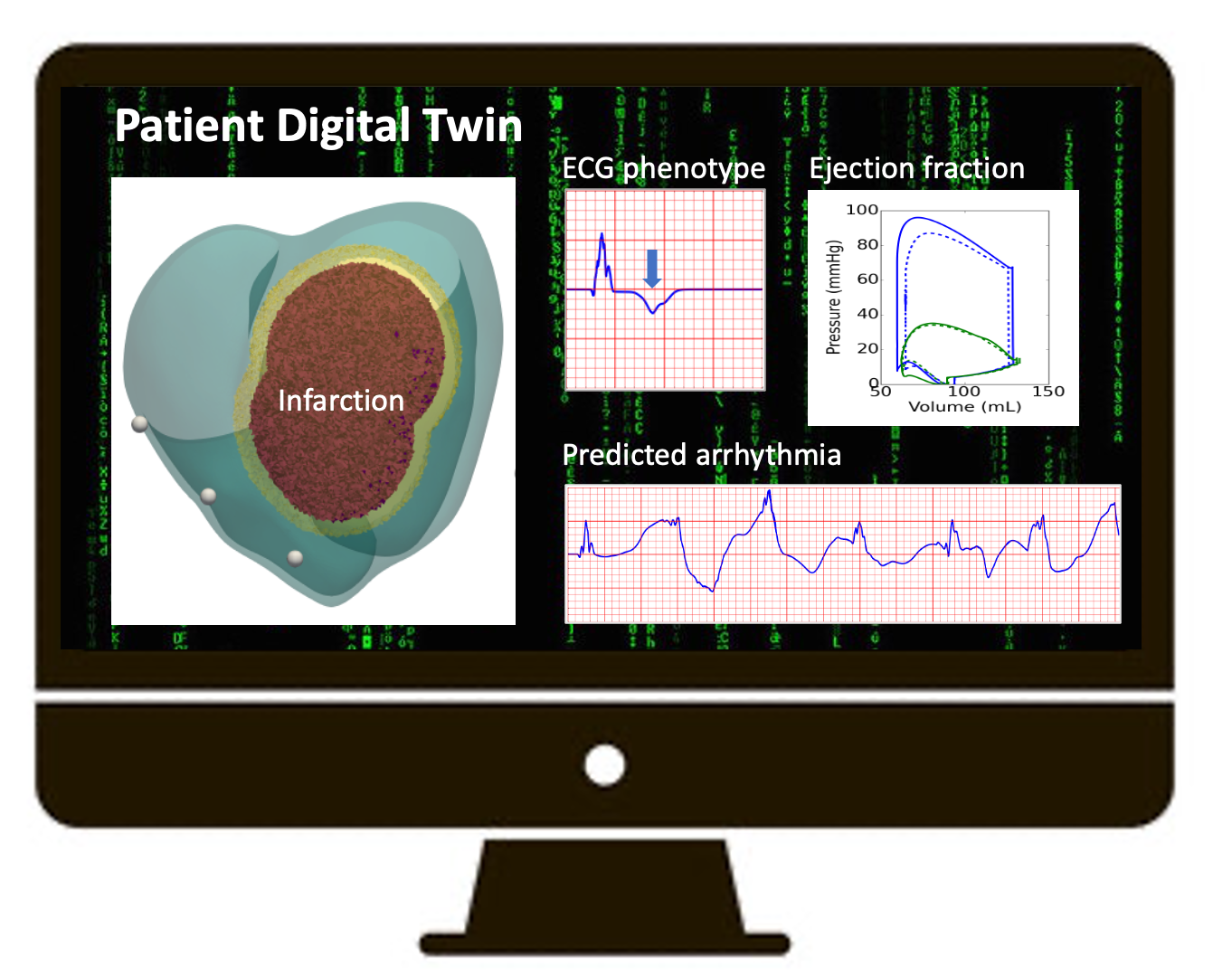Study using digital twins enhances risk assessment of heart attack patients
Posted: 8th May 2024
A team of scientists, led by the Department of Computer Science, built personalised three-dimensional computer models – known as digital twins – of human hearts, enhancing the identification of risks to patients who have suffered heart attacks, and making a major contribution to current knowledge in the field.

Heart attacks, or myocardial infarctions as they are technically known, affect millions of people every year and are responsible for many sudden deaths worldwide. Patients who survive these are often at risk of irregular heartbeat (cardiac arrhythmia) and heart failure in the long term. The clinical risk management of these patients is difficult due to changes in their phenotypes (observable traits), which vary and change over time. Currently, an image-based cardiac biomarker, known as ejection fraction, is used to identify where patients have increased impaired heart contractility after infarction. However, the association between this and subsequent arrhythmic risk remains unclear.
A study led by Dr Xin Zhou (Oxford-BMS Fellow), and Dr Zhinuo Jenny Wang (Senior Research Associate), aimed to investigate post-infarction risk using personalised three-dimensional computer models (digital twins) of real human hearts adapted for heart attack patients. The major research initiative also included Senior Research Associate Julia Camps, and Professor of Computational Medicine, Blanca Rogriguez. A wider multidisciplinary team also comprised representatives from Oxford’s Department of Physiology, Anatomy and Genetics, the Barcelona Supercomputer Center and the UCLA Cardiac Arrhythmia Center at the University of California. The study appeared in eLife, a leading publisher for the biomedical and life sciences.

We hope that our latest computer model of myocardial infarction can help improve the way risk assessment of patients is done and open doors for the development of digital twins technology for clinical management in the near future. Dr Zhinuo Jenny Wang
In healthcare, digital twins represent highly accurate, data-defined virtual representations of human body and its organs, such as the heart in this case, which aid in decision-making. The digital twin models in this study presented the team with detailed mathematical descriptions of the electrical and contractile activities of the human heart cells. These three-dimensional models were able to produce realistic electrocardiograms (ECGs) and ejection fractions, like those in clinical settings.

Risk assessment is vital for the long-term wellbeing of patients who have experienced heart attack, but the variable nature of patient phenotypes makes the task very challenging. In this study we aim to link post-infarction cellular changes to variable organ-level effects through the power of computational modelling, and we hope the work contributes to improved patient risk management as well as better understanding of the disease phenotypes. Dr Xin Zhou
Informed by this data, the team was able to develop different variants of post-infarction human heart models, covering both the acute and the chronic stages. For these different stages, the digital twins were able to produce variable patient ECGs, as would be observed clinically. The models were able to identify higher arrhythmic risk, as the ECG shape changed in the computer simulations. However, the simulated ejection fraction was shown not to predict the severity of arrhythmic risk.
The results identified not only the ECG biomarkers that show post-infarction electrical abnormality, but also showed that ejection fraction, which is currently used in the routine risk assessment of patients following heart attack, is not sufficiently predictive of electrical abnormality and arrhythmic risk. The three-dimensional digital twins enabled mechanistic explanation of clinical phenotypes at acute and chronic stages, which also facilitated the identification of novel risk biomarkers.
This study makes a significant contribution to current knowledge in the field of acute and chronic infarction and impacts experimental and clinical investigations in this key area of healthcare. The results also provided convincing evidence for the need to incorporate additional risk factors in the assessment of patients following heart attack. Click on the link below to view the full study.
https://elifesciences.org/reviewed-preprints/93002#x848280208
